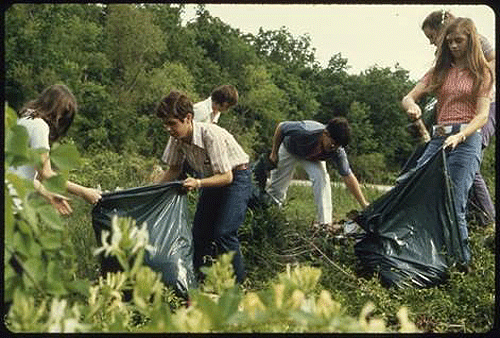Solid Waste Law Helps Keep Water Clean
by Mike Giuranna
 The Clean Water Act and the Safe Drinking Water Act deservedly get much of the credit for protecting the water you drink, but there’s another law you made not have heard of that’s no slouch either when it comes to keeping your water clean – the Resource Conservation and Recovery Act, often referred to as RCRA.
The Clean Water Act and the Safe Drinking Water Act deservedly get much of the credit for protecting the water you drink, but there’s another law you made not have heard of that’s no slouch either when it comes to keeping your water clean – the Resource Conservation and Recovery Act, often referred to as RCRA.
How so? At EPA my specialty is landfills, so let’s start there. Before RCRA, which marks its 40th Anniversary this year, open dumps were a common method of waste disposal. It sounds hard to believe now, but back then we did not have widely-recognized systems in place for managing landfills, making it easy for leaks to occur, and our water and land to become contaminated. Many dumps were responsible for polluting water sources and soils, causing potential harm to public health. As a result, numerous landfills and dumps became Superfund sites needing cleanup.
In 1991, Congress passed Subtitle D of RCRA, establishing a protective, practical system for disposing of trash in municipal solid waste landfills. These federal standards had major benefits including a decline in the total number of landfills nationwide from an EPA estimate of 20,000 in the 1970s to less than 2,000 in 2014.
Under RCRA, states have stepped up to the plate in taking the primary responsibility for enforcing landfill regulations. My job is to make sure the states understand the requirements, providing support and sharing experiences from other states along the way. Here are some of the water-related protections we review:
- Making sure that landfills are operating away from seismic fault lines, flood plains or other restricted areas.
- Using multiple liners like compacted clay and flexible membranes to protect groundwater and underlying soil from any liquid releases from the landfill (known as leachate).
- Providing guidance on the installation of groundwater monitoring wells to determine whether waste materials have escaped from the landfill.
- Developing corrective action processes for controlling and cleaning up if landfill releases occur.
- Monitoring groundwater once a landfill is properly closed after reaching capacity.
RCRA ensures that landfills are contained and operating with public health in mind. Next time you throw something away, think about all of the work that goes on behind the scenes to make sure your trash is handled properly and your water is kept clean. But better yet, always remember to reduce, reuse, and recycle whenever you can!
About the Author: Mike has been with EPA since 1983. He has worked in various EPA programs including Air and Superfund. For the last 20 years he has worked in solid waste, recycling, landfill regulation and composting








 Dumping Garbage at the Croton Landfill Operation, August 1973
Dumping Garbage at the Croton Landfill Operation, August 1973
 Along Route 580, near San Francisco. October 1972
Along Route 580, near San Francisco. October 1972 Dumping Prohibition Is Ignored on This Hunter’s Point Creek Adjacent to the John F. Kennedy Airport, May 1973
Dumping Prohibition Is Ignored on This Hunter’s Point Creek Adjacent to the John F. Kennedy Airport, May 1973
 Stacked Cars In City Junkyard Will Be Used For Scrap, August 1973
Stacked Cars In City Junkyard Will Be Used For Scrap, August 1973 Young People Filling Bags with Litter, May 1972
Young People Filling Bags with Litter, May 1972 Children in Fort Smith Are Learning That Protecting the Environment Will Take More Than Awareness, June 1972
Children in Fort Smith Are Learning That Protecting the Environment Will Take More Than Awareness, June 1972





